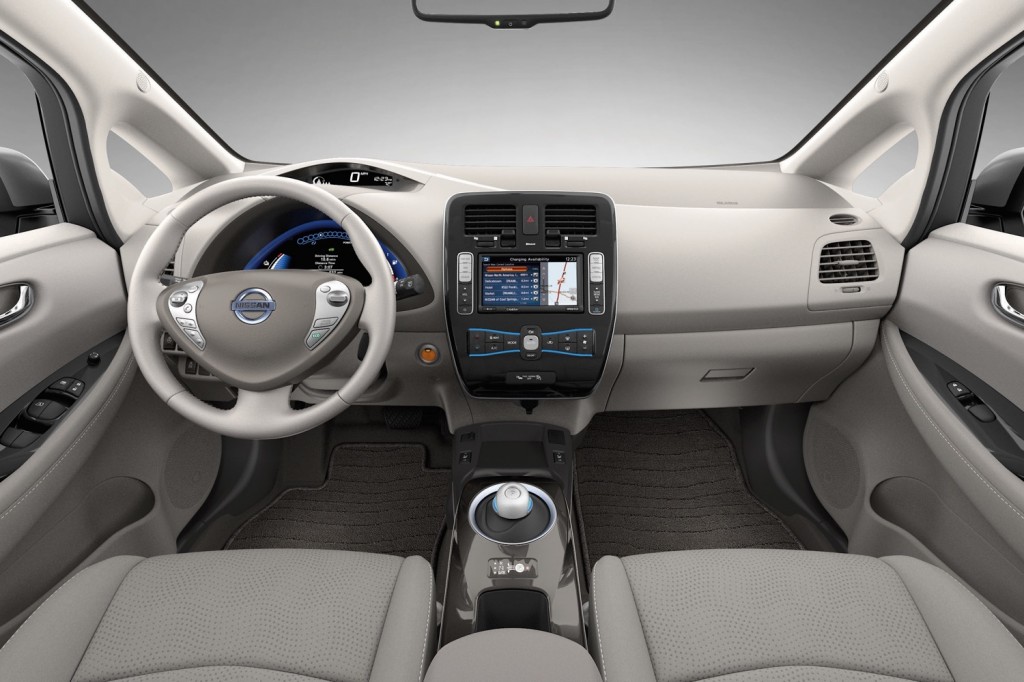Six years after the current-generation of the first high-volume modern battery-electric car went on sale in the U.S., the 2017 Nissan Leaf carries on virtually unchanged from the previous model year.
The Leaf remains the best-selling electric car in history, although its sales have slowed recently—perhaps due to the design's age and anticipated competition from longer-range mass-market electric cars.
The only major change for 2017 is that the 30-kilowatt-hour battery pack introduced for the 2016 model year is now officially standard on all trim levels.
DON'T MISS: 2017 Nissan Leaf specs: all 30-kwh batteries, otherwise unchanged
That larger pack was previously offered only on the Leaf SV and SL trim levels through most of the 2016 model year.
The base Leaf S started last year with the previous 24-kWh battery pack, and was quietly upgraded during the year.
With the 30-kWh pack, the Leaf has an EPA-rated 107 miles of range.

2017 Nissan Leaf
Among widely-available electric cars, that puts the Nissan behind the upgraded 2017 BMW i3 (114 miles) and the brand new 2017 Hyundai Ioniq Electric (124 miles).
All of these models remain far behind the 2017 Chevrolet Bolt EV, which has an EPA-rated 238-mile range and is expected to go on sale—in limited quantities at least—before the year is out.
All Leaf models continue to use an 80-kilowatt (107-horsepower) electric motor, which produces 187 pound-feet of torque.
ALSO SEE: Nissan Leaf S quietly gets 30-kwh battery upgrade, higher price
Drive is to the front wheels, and the Leaf has an EPA efficiency rating of 112 MPGe combined.
(Miles Per Gallon Equivalent, or MPGe, is a measurement of how far a car can travel electrically on the same amount of energy that's contained in 1 gallon of gasoline.)
A 3.6-kw onboard charger is standard on the Leaf S; a 6.6-kw charger is optional on that model, and standard on the higher SV and SL trim levels.

2017 Nissan Leaf
A full charge from a 240-volt Level 2 AC sources takes around 7 hours with the 3.6-kw charger, and around 6 hours with the 6.6-kw charger, according to Nissan.
A DC fast charging —using the CHAdeMO standard—is also standard on the SV and SL and optional on the S.
Nissan's claim of an 80-percent charge in 30 minutes remains unchanged.
CHECK OUT: 2016 Nissan Leaf: First Drive Of 107-Mile Electric Car (Dec 2015)
Standard equipment on the base Leaf S includes16-inch steel wheels with plastic wheel covers, automatic climate control, and a rearview camera.
The Leaf SV gains features like 17-inch alloy wheels, NissanConnect infotainment system with a 7.0-inch touchscreen and navigation, heated exterior mirrors, and a heated steering wheel.
The top Leaf SL gets a photovoltaic solar panel on the rear spoiler, automatic LED headlights (low beams only), leather seats, and an auto-dimming rearview mirror, among other equipment.

2017 Nissan Leaf
Besides the standard equipment, Nissan's Around View Monitor surround-camera system and an energy-efficient Bose audio system are optional on the SV and SL models, as part of a package.
Pricing for the 2017 Nissan Leaf starts at $31,545 for the Leaf S, addition of the 30-kWh battery pack having pushed that model over the $30,000 barrier.
The Leaf SV and SL start at $35,065 and $37,655, respectively.
MORE: Next Nissan Leaf confirmed for 60-kwh battery, 200 miles of range
All prices include an $865 destination charge, but do not include any federal, state, or local electric-car incentives.
The current Leaf is expected to be replaced by a new second-generation version appearing sometime next year and anticipated as a 2018 model.
Nissan hasn't released any information about this second-generation Leaf, but at least one version is expected to offer a range of at least 200 miles to compete with the Chevy Bolt EV.
_______________________________________________












